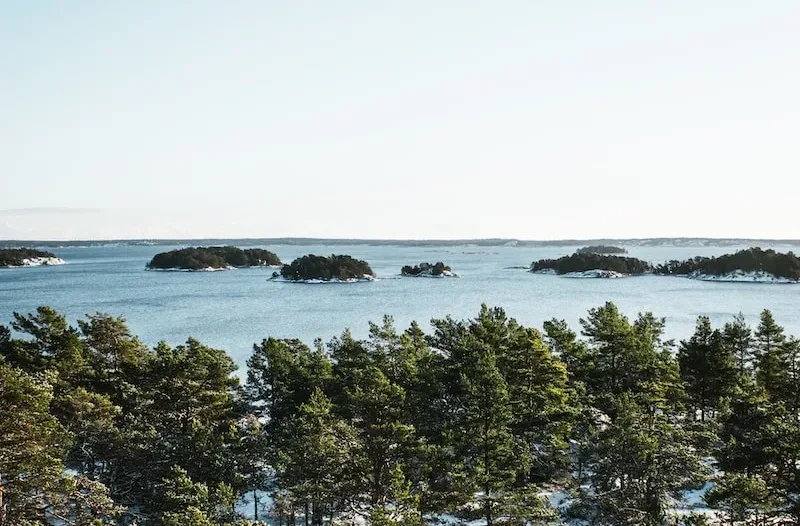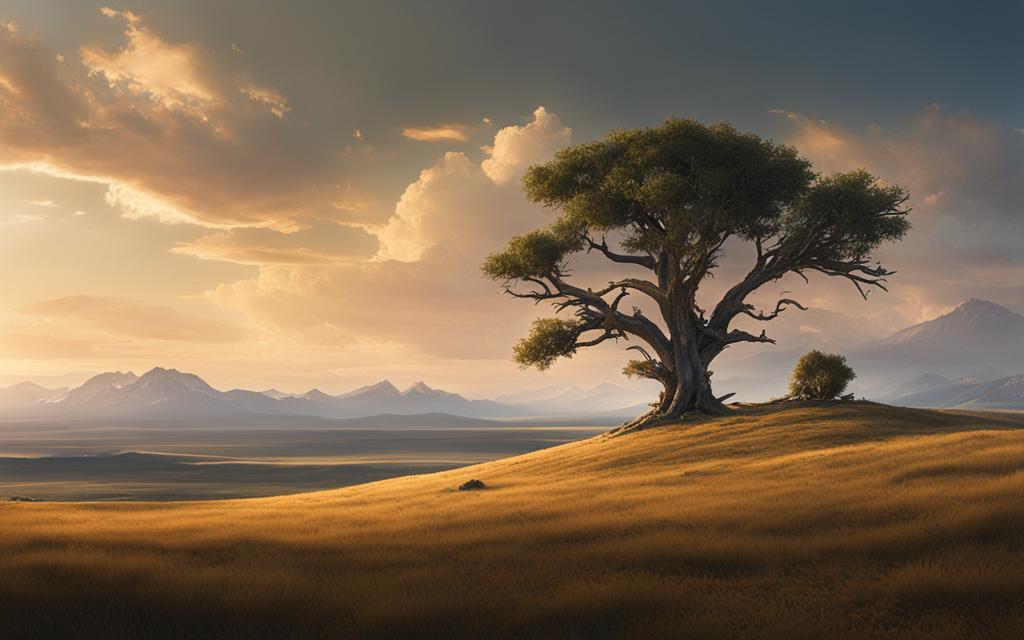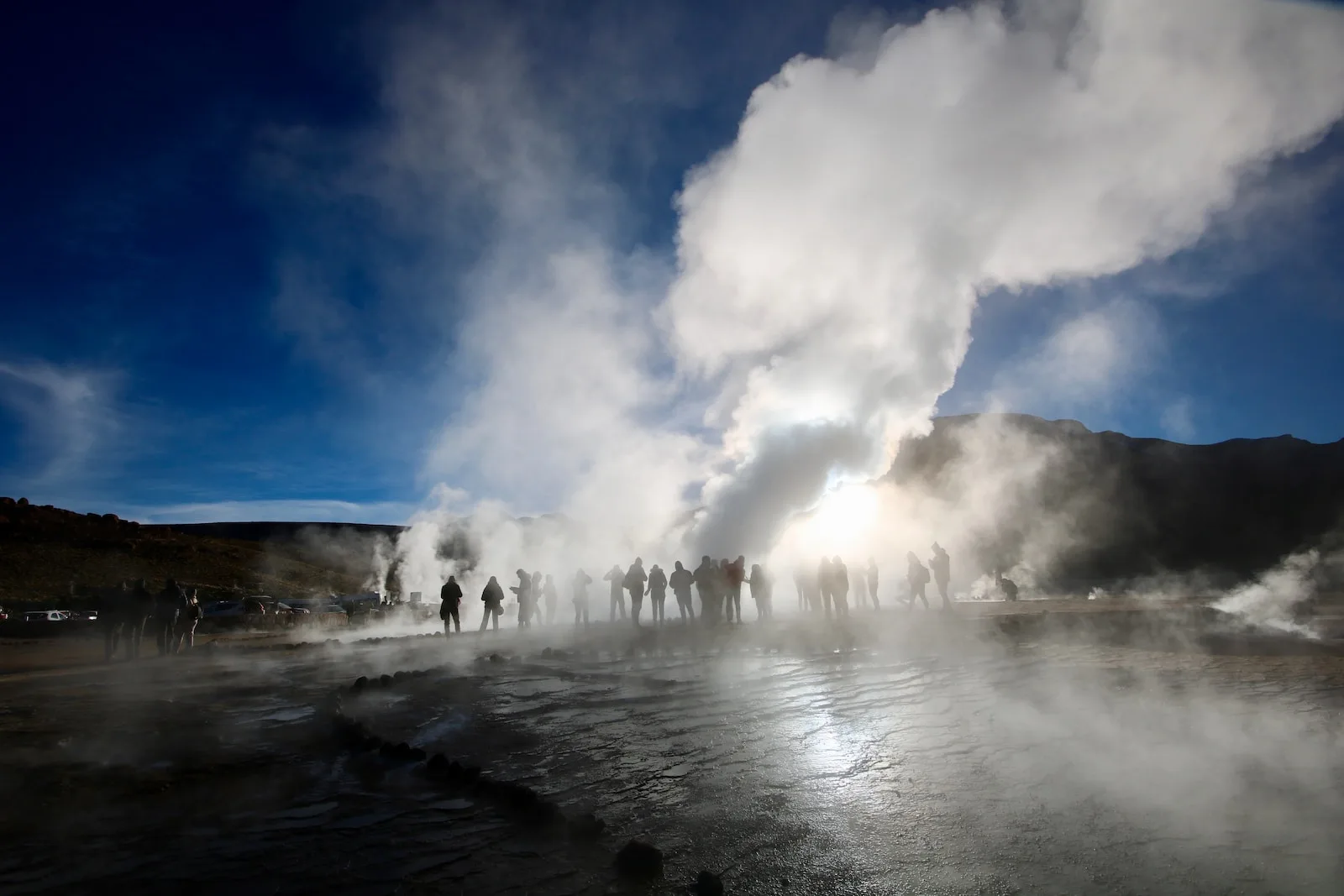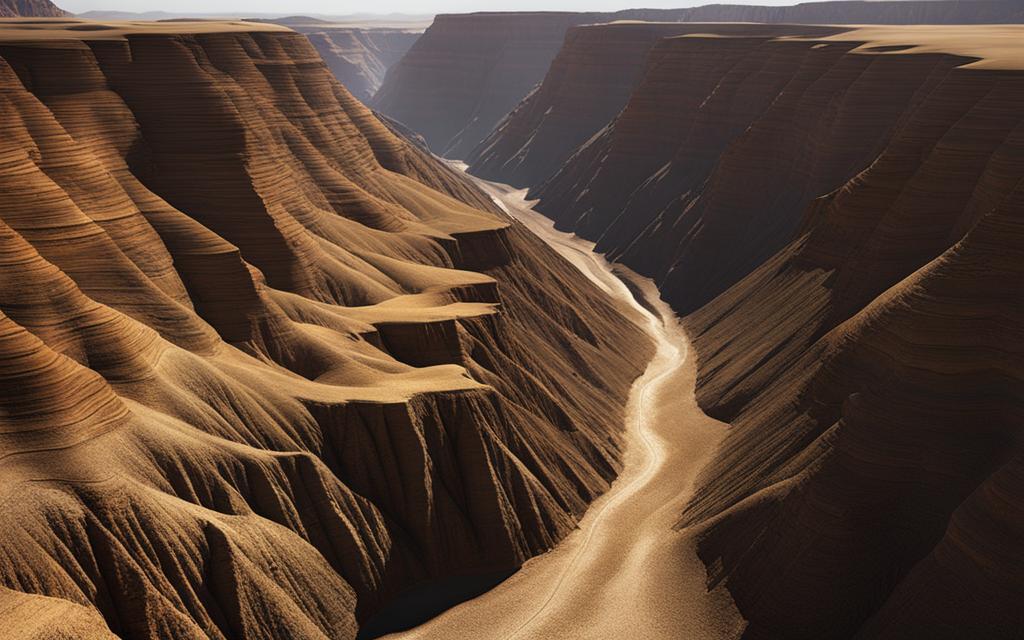Introduction
Welcome, dear readers, to an enchanting journey through the fascinating realm of archipelagos and island chains. These natural wonders have captured the imaginations of explorers, scientists, and travelers alike for centuries. In this article, we will unravel the mysteries that differentiate archipelagos from island chains, shedding light on their distinctive features and elucidating the awe-inspiring marvels they hold.
Definition of Archipelagos and Island Chains
Before embarking on this enlightening expedition, let us first understand what exactly we mean by archipelagos and island chains. An archipelago refers to a group or cluster of islands that are closely situated in a body of water, be it seas or oceans. These islands usually share common geological origins or are formed due to volcanic activity.
In contrast, an island chain is also a collection of islands; however, they are typically elongated in shape as if forming a chain-like structure. Island chains can be formed through various geological processes such as tectonic plate movements or volcanic activity along submarine ridges.
Brief Overview of the Topic
The purpose of our exploration today is not just to differentiate between these two formations but to delve into their intricate details and uncover what sets them apart. We will examine their geological origins, ecological significance, cultural diversity, geographical features including distances between islands within each formation and how they impact flora, fauna and human settlements. Additionally we will explore climate patterns influenced by oceanic currents in these regions as well as cultural significance shaped by isolation from mainland communities.
Furthermore, we shall indulge in contemplating the unique tourism potential each offers with its array of activities and attractions beckoning wanderers all around the globe.
But certainly not least, we shall discuss environmental challenges faced by both formations with regards to their delicate ecosystems and the measures taken to preserve these natural wonders.
Archipelagos: The Marvels of Nature
Formation and geological processes behind archipelagos
Archipelagos, those enchanting clusters of islands, are not mere accidents of nature. They owe their existence to the intriguing forces of geology and tectonic activity. These captivating formations typically occur when a series of volcanic eruptions takes place underwater or along fault lines in the Earth’s crust.
Over time, these eruptions give rise to volcanic islands that dot the surrounding waters, ultimately forming an archipelago. The unique geological processes responsible for archipelago formation play a vital role in determining their characteristics.
For instance, subduction zones, where one tectonic plate slides beneath another, give birth to line-shaped or curved archipelagos such as the Indonesian archipelago. On the other hand, hotspot volcanism creates chains of islands like Hawaii, where a stationary plume of magma generates a continuous trail of volcanic landmasses as the Pacific Plate moves over it.
Famous archipelagos around the world (e.g., Galapagos Islands, Maldives)
Archipelagos hold an allure that captivates adventurers and nature enthusiasts alike with their breathtaking beauty and ecological wonders. One prominent example is the Galapagos Islands located off the coast of Ecuador in South America. Renowned for their role in shaping Charles Darwin’s theory of evolution through natural selection, these isolated islands boast extraordinary biodiversity found nowhere else on Earth.
From giant tortoises ambling across arid plains to blue-footed boobies performing intricate mating dances on rugged cliffsides, this archipelago is a living testament to nature’s brilliance. Another celebrated archipelago adorns the azure waters of the Indian Ocean: The Maldives.
Comprising 26 coral atolls formed around underwater volcanoes millions of years ago, this tropical paradise entices travelers with its pristine white sandy beaches, crystal-clear lagoons, and vibrant coral reefs teeming with marine life. The Maldives also faces the threat of rising sea levels due to climate change, making it a poignant reminder of the delicate balance between human activities and the conservation of these natural wonders.
Unique biodiversity and ecological significance of archipelagos
Archipelagos possess a remarkable capacity to nurture extraordinary biodiversity, rendering them invaluable ecosystems. The isolation of these island clusters provides a favorable environment for species evolution and endemism – the development of unique species found nowhere else in the world.
With limited opportunities for migration and gene flow from external sources, archipelagos become hotspots for speciation. The Galapagos Islands serve as a paradigmatic example.
Their isolation allowed diverse flora and fauna to evolve independently on each island, leading to significant variations in species characteristics even within small geographical regions. From Darwin’s finches showcasing distinct beak adaptations for various food sources to land iguanas that have evolved vivid coloration strategies, these islands exemplify nature’s ability to foster adaptive radiation.
Moreover, archipelagos play an essential role in maintaining global biodiversity by serving as stepping stones for migratory species across vast oceanic expanses. They provide vital resting places during long journeys and act as refuges from predators or unfavorable environmental conditions.
As such, preserving the integrity of archipelagic ecosystems is crucial not only for their own sake but also for safeguarding overall global biodiversity. In section 2 / 8 of the article covering “Archipelagos: The Marvels of Nature,” we explored how archipelagos come into existence through geological processes such as volcanic eruptions or hotspot volcanism.
We delved into famous archipelagos like the Galapagos Islands and the Maldives, highlighting their unique features and ecological significance. By uncovering what sets archipelagos apart from island chains at their very core, we gain a deeper appreciation for these natural wonders and the role they play in our world.
Differentiating Island Chains from Archipelagos Based on Formation
Island Chains: A Unique Formation
When it comes to understanding island chains, it’s important to grasp their distinctive formation process. Unlike archipelagos, which are created through volcanic activity or tectonic shifts, island chains exhibit a different geological origin. Island chains emerge as a result of hotspot volcanism—the phenomenon where a stationary mantle plume generates a string of volcanoes as the tectonic plate moves over it.
This movement creates a series of islands, often extending in a linear pattern. Notably, island chains tend to be younger than archipelagos since they form as the tectonic plate continues its journey.
Examples of Notable Island Chains
One prominent example of an island chain is the world-famous Hawaiian Islands in the Pacific Ocean. This archetypal chain comprises eight main islands and numerous smaller islets, stretching over 1,500 miles from southeast to northwest.
The Hawaiian Islands are renowned for their breathtaking beauty and diverse landscapes—from lush rainforests and cascading waterfalls to awe-inspiring volcanic craters like Haleakalā and Kīlauea. Another remarkable island chain is the Aleutian Islands located in Alaska, USA.
Spanning around 1,200 miles between Alaska’s mainland and Russia’s Kamchatka Peninsula, these rugged islands represent the intersection between two major tectonic plates—the Pacific Plate and North American Plate. The Aleutian Islands are not only geologically fascinating but also culturally significant for indigenous communities such as the Aleuts who have inhabited these lands for thousands of years.
Cultural Diversity and Historical Importance of Island Chains
Island chains hold tremendous cultural diversity due to their geographical isolation and historical influences. Over centuries, these isolated land masses became home to various communities with distinct cultural traditions, languages, and customs.
Island chains often served as strategic locations for trade routes, attracting exploration, colonization, and cultural exchange. For instance, the Hawaiian Islands boast a rich Polynesian heritage intertwined with diverse influences from Asian, European, and American cultures.
This fusion of traditions has shaped Hawaii’s unique customs such as hula dancing, intricate lei-making, and a vibrant cuisine blending flavors from different regions. Similarly, the Aleutian Islands have a rich history closely tied to the indigenous Aleut people who have developed resilient communities adapted to their harsh environment.
Through their artistic expressions like intricate basketry or skillful kayak-building techniques, the Aleuts have preserved their distinct cultural identity despite external influences. Island chains exhibit distinctive characteristics in terms of formation processes compared to archipelagos.
Notable examples like the Hawaiian Islands and Aleutian Islands showcase the diverse natural landscapes these chains offer. Furthermore, these island chains harbor deep historical significance and cultural diversity due to their isolated nature and historical interactions with various civilizations over time.
Geographical Features: Archipelagos vs Island Chains
Variation in Size and Number of Islands within Archipelagos and Island Chains
When it comes to comparing archipelagos and island chains, one noticeable aspect is the variation in both size and number of islands. Archipelagos are known for their vastness, often comprising numerous islands scattered across a large area. Take, for instance, the Indonesian archipelago, consisting of a staggering 17,504 islands!
These islands come in all shapes and sizes, ranging from small uninhabited islets to larger landmasses supporting thriving communities. On the other hand, island chains tend to be more concise in terms of size and number.
They usually consist of a linear arrangement of islands along an underwater mountain range or a tectonic plate boundary. A prime example is the Hawaiian Islands chain composed of eight main volcanic islands stretching over 1,500 miles in the Pacific Ocean.
Distances between Islands in Both Formations: Factors Influencing Distances
The distances between islands within archipelagos and island chains can vary significantly based on several factors that influence their formation. In archipelagos, distances between islands can range from just a few meters to hundreds or even thousands of kilometers apart. Tectonic activity plays a crucial role here—the movement of tectonic plates causes volcanic eruptions that lead to the formation of new islands or shift existing ones farther apart over time.
Volcanic eruptions also contribute to the varying distances within an archipelago as different volcanic events result in diverse landforms with varying sizes and distributions. Similarly, island chains experience distance variations due to tectonic activity but are often marked by relatively shorter spans between adjacent islands due to their linear arrangement along geological features like mid-ocean ridges or hotspots.
The impact on flora, fauna, and human settlements can also be profound in both formations. Varying distances between islands influence the dispersal and colonization of plant and animal species, leading to unique ecosystems.
In archipelagos with larger distances between islands, certain species might evolve in isolation, resulting in endemic biodiversity found nowhere else on Earth. Additionally, the distance factor affects human settlements as it determines accessibility and connectivity between islands.
Some communities may develop distinct cultures and traditions due to their relative isolation, while others may face challenges in terms of transportation and infrastructure development. Overall, the geographical features of archipelagos and island chains play a pivotal role in shaping their ecosystems and influencing human interactions within these stunning natural formations.
Climate and Weather Patterns in Archipelagos and Island Chains
Discussing the influence of oceanic currents on climate variations
When it comes to climate, archipelagos and island chains exhibit fascinating differences due to the impact of oceanic currents. These mighty currents, like the Gulf Stream or the Kuroshio Current, play a pivotal role in shaping the weather patterns experienced by these island formations. In archipelagos, where islands are typically clustered together, oceanic currents often interact with each other, resulting in complex and diverse climates.
For example, in the Galapagos Islands located off the coast of Ecuador, the convergence of several oceanic currents creates a unique climatic scenario. The cold Humboldt Current from Antarctica collides with warm equatorial waters along with cool upwelling currents.
This intricate dance between warm and cold water masses gives rise to a mild and fluctuating climate that varies from one island to another. It’s not uncommon for visitors to experience different microclimates within this archipelago as they explore various islands.
In contrast, island chains tend to stretch over longer distances, which can result in more uniform weather conditions along their length. A prime illustration is the Hawaiian Islands—blessed by consistent trade winds that blow across them from east to west.
This steady airflow brings moisture-laden air towards windward (eastern) sides of the islands where it ascends mountainsides causing rain clouds to form. As a result, lush rainforests flourish on windward slopes while leeward (western) sides remain much drier.
Exploring microclimates within different islands or groups
While both archipelagos and island chains possess unique microclimates within their respective regions, archipelagos often showcase greater variation due to their compact nature and geological diversity. Take Indonesia’s stunning Maluku Islands as an example.
This archipelago encompasses a vast array of microclimates, ranging from tropical rainforests on the larger islands to savannah-like landscapes on smaller ones. The diverse elevations and geographical features across the Maluku Islands serve as microclimate catalysts, generating distinct weather patterns and creating an ecological paradise.
Similarly, within island chains like the Aleutian Islands in Alaska, microclimates can be observed. These volcanic islands stretch over a significant distance from the mainland, resulting in varying weather conditions along their length.
The westernmost islands experience cool oceanic climates with mild summers and relatively mild winters due to maritime influences. In contrast, the easternmost reaches of the Aleutian chain encounter colder subarctic climates influenced by arctic air masses.
While both archipelagos and island chains have their own climate features and variations influenced by oceanic currents, archipelagos often exhibit more intricate weather patterns due to their compactness and geological diversity. Exploring these fascinating microclimates within different islands or groups adds an element of excitement to any voyage through these natural wonders.
Cultural Significance: Archipelago vs Island Chain Communities
Comparing traditional lifestyles, customs, and traditions
One of the fascinating aspects that distinguish archipelagos from island chains is their unique cultural tapestry. In archipelagos, such as the rich Indonesian archipelago or the diverse Philippines, each island within the group has its distinct set of traditional lifestyles, customs, and traditions.
These differences emerge from a mix of historical influences, diverse ethnic groups inhabiting each island, and variations in available resources. For instance, in Indonesia’s Bali island within the archipelago, you’ll witness vibrant Hindu traditions interwoven into daily life through colorful ceremonies like the Galungan festival and mesmerizing dances like the Legong.
In contrast, neighboring Lombok Island embodies Islamic traditions with its grand Sasak weddings and unique bamboo handicrafts. On the other hand, island chain communities like those found in Polynesia or Micronesia present an intriguing blend of shared culture alongside localized nuances.
Despite residing on separate islands connected by a common geographical thread, these communities often share similar Polynesian or Micronesian cultural traits while preserving distinctive practices specific to their respective islands. The Polynesian Maoris’ rich heritage can be observed across New Zealand’s North and South Islands through captivating haka performances during ceremonial events or artistic expressions in intricate Maori tattoos known as ta moko.
Impact of isolation on cultural development
The isolation experienced by both archipelagos and island chain communities has played a pivotal role in shaping their unique cultures over centuries. Archipelagos’ isolated nature has allowed for significant divergences in customs and languages between islands within a group due to limited contact with one another. This isolation can lead to rich linguistic diversity, where different dialects or even distinct languages develop within a single archipelago.
For example, the Philippines, with its over 7,000 islands, boasts incredible linguistic diversity, with approximately 175 languages spoken across the archipelago. In island chain communities, isolation fosters a sense of identity and self-sufficiency.
By relying heavily on their immediate environment and limited external influences, these communities have developed distinct practices and survival techniques that have been passed down through generations. For instance, the Hawaiian Islands’ traditional practices of fishpond aquaculture (loko i’a) and taro farming (kalo) demonstrate the ingenious ways in which island chain communities have adapted to their isolated environments while preserving cultural heritage.
The cultural significance of both archipelagos and island chains lies in the richness of their traditions and customs. Whether it’s the diversity found within each individual island of an archipelago or the shared yet distinct cultures among islands within an island chain, these formations offer a captivating tapestry of human heritage influenced by their unique histories and geographical isolation.
Tourism Potential: Exploring Archipelago vs Island Chain Experiences
Highlighting popular tourist destinations in each formation
When it comes to tourism, both archipelagos and island chains have their fair share of breathtaking destinations that attract visitors from all around the globe. Let’s take a closer look at some of the popular hotspots in each formation. In archipelagos, one cannot overlook the enchanting Galapagos Islands.
Located off the coast of Ecuador, these volcanic islands offer a once-in-a-lifetime opportunity to witness an incredible array of unique wildlife. From swimming with sea turtles and playful sea lions to observing giant tortoises roaming freely, the Galapagos Islands provide an unparalleled experience for nature enthusiasts.
Another archipelago worth exploring is the Maldives, renowned for its pristine white-sand beaches and crystal-clear turquoise waters. This tropical paradise offers luxurious resorts on private islands where travelers can indulge in unmatched relaxation and enjoy world-class snorkeling or diving amidst vibrant coral reefs teeming with marine life.
On the other hand, island chains like Hawaii captivate tourists with their exquisite beauty and diverse landscapes. The Hawaiian Islands offer a wide range of attractions catering to various interests.
From hiking through lush rainforests and exploring mesmerizing waterfalls on Maui’s Road to Hana, to witnessing the fiery lava flows on Big Island’s Kilauea volcano, there is something for everyone in this Pacific island chain. Additionally, Japan’s archipelago boasts stunning destinations like Okinawa with its subtropical climate and beautiful coral reefs ideal for snorkeling or kayaking adventures.
Unique activities and attractions offered by archipelagos vs island chains
While both archipelagos and island chains have much to offer visitors, they boast distinct activities that make each experience truly unique. Archipelagos often provide exceptional opportunities for marine-based adventures.
For instance, diving enthusiasts will find themselves spellbound by the mesmerizing underwater world found in archipelagos like the Seychelles. With its abundant coral reefs and diverse marine life, including exotic fish and graceful manta rays, exploring the depths of these archipelagic waters is an absolute delight.
On the other hand, island chains like the Caribbean offer a blend of cultural experiences and water-based activities. Visitors can immerse themselves in the vibrant local culture by attending lively music festivals or tasting delicious Caribbean cuisine.
Meanwhile, snorkeling or sailing excursions allow tourists to discover hidden coves and pristine beaches nestled among the islands. Whether you choose to explore an archipelago or an island chain, you are bound to be captivated by their distinct tourism potential.
The Galapagos Islands’ unique wildlife encounters or Hawaii’s awe-inspiring volcanic landscapes offer remarkable experiences that are entirely different from those found on beach-focused island chains like the Maldives or the Caribbean. So pack your bags and embark on your chosen adventure – paradise awaits!
Environmental Challenges:
The Battle Against Climate Change and Rising Sea Levels
As archipelagos and island chains are predominantly located in coastal regions, they are particularly vulnerable to the impacts of climate change. Rising sea levels pose a significant threat to these formations, leading to erosion, flooding, and the potential loss of entire islands. The delicate balance of ecosystems that thrive within archipelagos and island chains is at risk due to the increased frequency and intensity of storms and hurricanes associated with climate change.
Efforts to mitigate these challenges involve implementing coastal protection measures, such as building seawalls or restoring natural barriers like mangroves. Additionally, sustainable tourism practices are being encouraged to minimize further environmental degradation.
Preserving Biodiversity: Balancing Conservation and Development
Both archipelagos and island chains are home to unique flora and fauna found nowhere else on Earth. However, rapid urbanization driven by tourism development presents a significant challenge in preserving this biodiversity. Balancing human needs with environmental conservation is crucial for sustaining the delicate ecosystems found within these formations.
Governments must enforce strict regulations on construction activities, waste management practices, fishing limits, and protected area management plans. Furthermore, education campaigns aimed at raising awareness about the importance of preserving these fragile environments can help foster a sense of responsibility among locals and tourists alike.
Conclusion:
Archipelagos and island chains offer captivating landscapes rich in natural beauty and cultural diversity. While they share similarities in terms of being comprised of multiple islands surrounded by water bodies, there are distinct characteristics that set them apart. Archipelagos possess unique geological formations resulting from volcanic activity or tectonic forces while also boasting remarkable biodiversity hotspots.
On the other hand, island chains often feature a more linear arrangement formed through processes like hotspot volcanism or subduction zones. While both face environmental challenges due to climate change and the need for sustainable development, efforts are being made to find a balance between preserving these extraordinary ecosystems and catering to human needs.
Through responsible tourism practices, coastal protection measures, and biodiversity conservation initiatives, there is hope for a future where archipelagos and island chains can continue to thrive while providing memorable experiences for visitors. Let us cherish these remarkable formations and work together to ensure their preservation for generations to come.
 Skip to main content
Skip to main content


